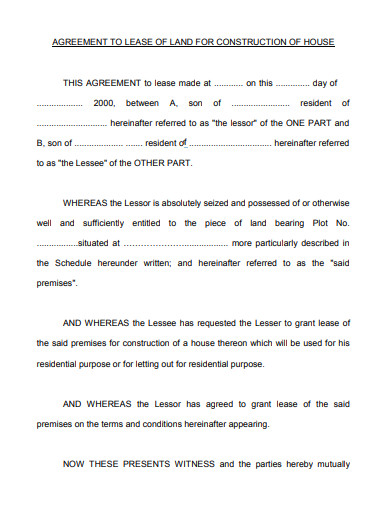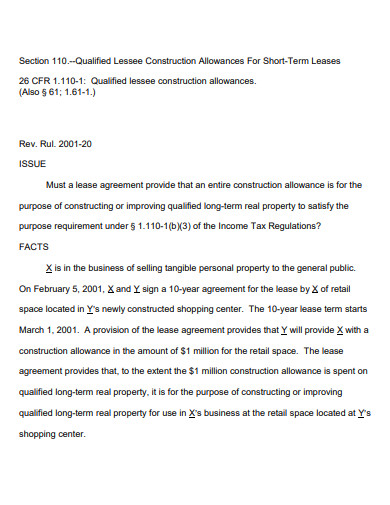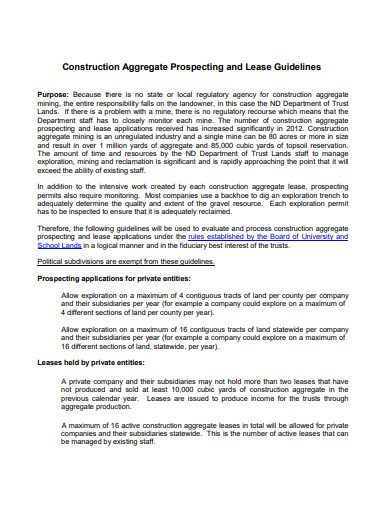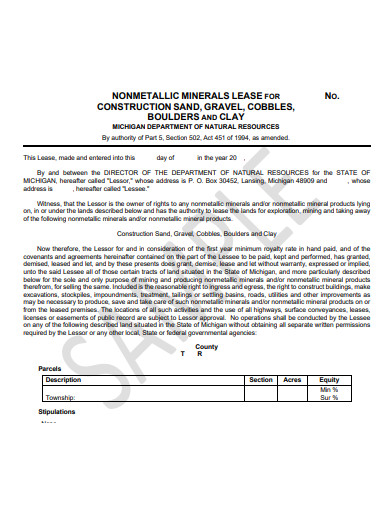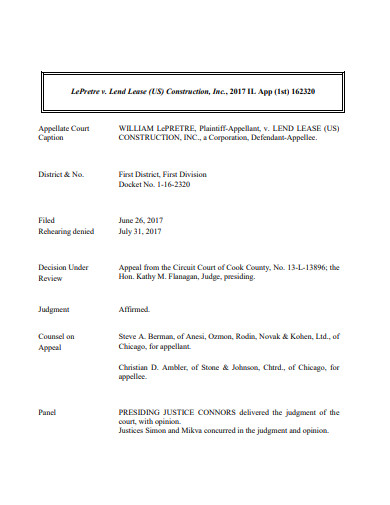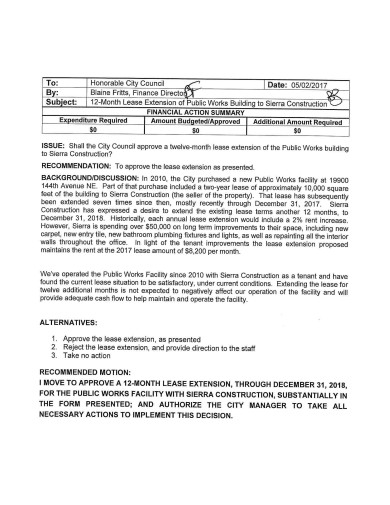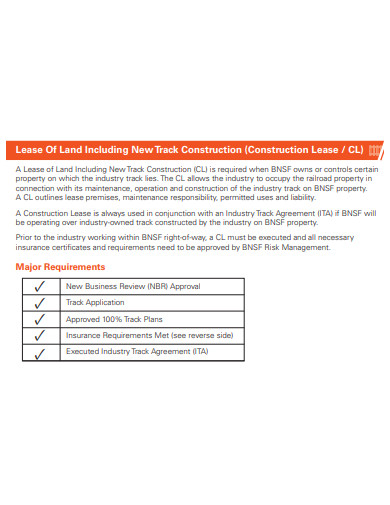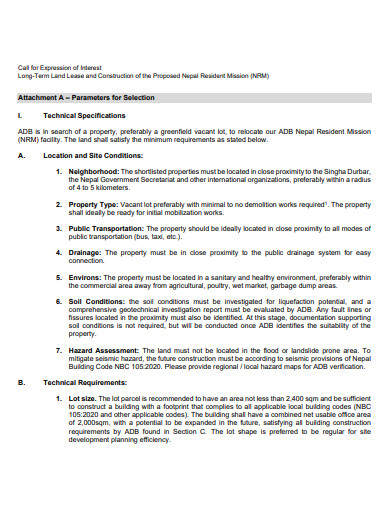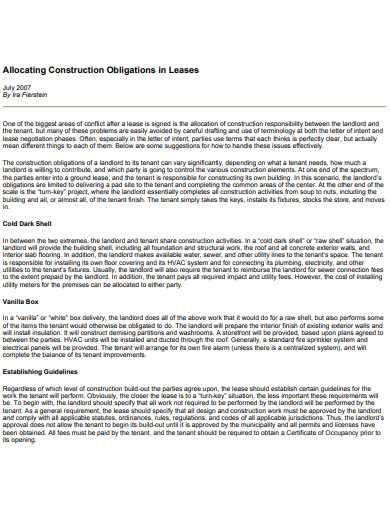Considering a construction project for your business? Our Sample Construction Lease samples are invaluable tools to streamline the process. Specifically tailored for business needs, these templates provide a solid foundation, ensuring every lease detail is addressed. By utilizing our templates, businesses can save time, reduce errors, and foster confidence in their construction agreements. Equip your business with the right resources; see how our templates can make a difference.
14+ Construction Lease Samples
1. Construction Equipment Lease Agreement Template
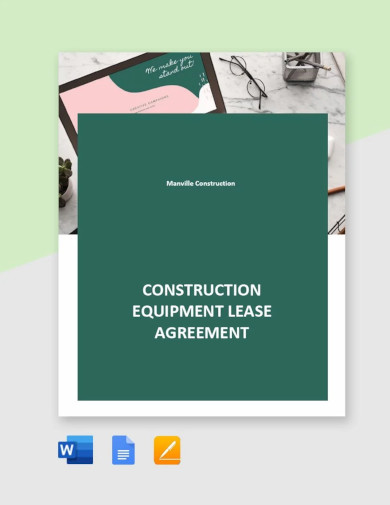
2. Construction Heavy Equipment Lease Proposal Template

3. Construction Equipment Lease Proposal Template
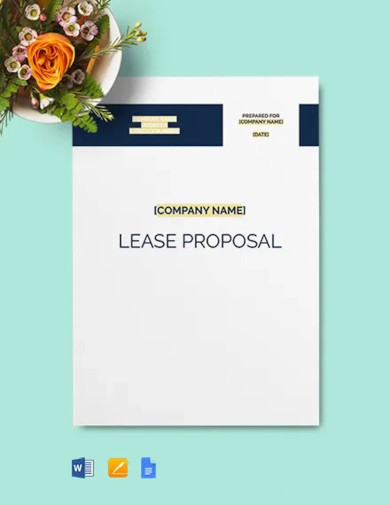
4. Land For Construction of House Agreement to Lease Template
5. Construction Allowances For Short-Term Lease Template
6. Construction Aggregate Prospecting and Lease Template
What is a construction lease?
A construction lease, often mistaken for a simple rental agreement, is a more complex document that involves allowing one party, typically a contractor or developer, the right to use a parcel of land for the purpose of construction. However, it’s more than just a rental agreement for a piece of land.
The realm of construction is multifaceted, and the lease agreements that govern such activities reflect that complexity. At its core, a construction lease sets forth the conditions under which a developer can operate on a piece of property. This might include anything from erecting a new building to adding an extension or making significant structural changes to an existing edifice.
But why is there a need for a specialized lease just for construction? The primary reason is risk. Construction involves substantial financial investments, potential damages to properties, and intricate compliance with local building codes and regulations. A construction lease provides a clear framework for all these issues and lays out the responsibilities and rights of each party.
There’s also the matter of duration. Unlike typical rental agreements which might span months or years, construction leases have a more variable timeframe. They can be short, spanning only a few weeks for minor projects, or could extend over several years for larger infrastructural developments.
Moreover, a construction lease often goes hand in hand with discussions about eventual property ownership, return on investment, and revenue-sharing post-construction, especially if the development increases the value or potential earnings from the property.
What are the essential elements of a construction lease?
When diving into the world of construction leases, it’s crucial to recognize the integral components that ensure the sample agreement’s clarity and effectiveness. Here are the essential elements:
Description of the Property: This section provides a detailed description of the property, ensuring there’s no ambiguity. This includes the property’s exact location, dimensions, and any notable features or landmarks.
Lease Term: Specifies the duration of the lease. This could be a set period or tied to the completion of the construction project. It also addresses conditions under which extensions can be granted or if the project finishes ahead of schedule.
Rent and Payment Terms: Details about the rental amount, payment schedule, and any provisions for increases or adjustments. For construction leases, this could also include clauses about rent abatements or reductions if the property becomes unusable during the construction period.
Rights and Responsibilities: Clearly outlines what the lessee can and cannot do on the property. This section will detail the kind of construction allowed, any restrictions, and the standards to which the construction must adhere.
Insurance and Liability: An essential element, this part specifies who is responsible for insuring the property and the construction activities. It also addresses liability issues in case of accidents, damages, or any other unforeseen events.
Termination Clauses: These dictate the conditions under which the lease can be terminated. This could be due to a breach of contract, failure to complete construction on time, or any other mutually agreed-upon reasons.
Compliance with Local Regulations: The lease should emphasize the need to comply with all local building codes, regulations, and obtain necessary permits. It’s the lessee’s responsibility to ensure all construction is legal and up to code.
Post-Construction Provisions: Once construction is complete, the lease should specify any responsibilities of the lessee. This might include restoring the land to its original state, addressing any damages, or even stipulations about the property’s future use.
In essence, a construction lease serves as a protective shield for both parties, ensuring that the interests of both the property owner and the developer are safeguarded. With all these elements in place, a construction lease can pave the way for a smooth, efficient, and legally compliant construction process.
7. Sample Construction Lease Template
8. Construction and Real Estate Lease Template
9. Basic Construction Lease Template
10. Construction Lease Template
11. Printable Construction Lease Template
12. Building Construction Lease Template
13. New Track Construction Lease Template
14. Construction Long-Term Land Lease Template
15. Construction Lease in PDF
How do I write a construction lease?
Writing a construction lease might seem like a daunting task, but by following a structured approach and ensuring all essential elements are covered, the process becomes more manageable. Here’s a step-by-step guide to help you craft a robust construction lease:
Begin with the Basics: Start by mentioning the parties involved – the lessor (property owner) and the lessee (contractor or developer). Include their full names, addresses, and contact details to ensure clarity.
Detailed Property Description: It’s essential to be thorough when describing the property. Include its full address, boundaries, size, and any pertinent features. You might also consider attaching a legal land description or a surveyor’s report.
Lease Duration: Specify the start and end dates of the lease. Make it clear if the lease term is tied to the construction project’s completion or if it’s a fixed duration. Also, detail provisions for extensions or early terminations.
Financial Details: Clearly outline the rent amount, payment frequency, and any other financial obligations, like security deposits. If there are conditions under which the rent might be adjusted, such as project delays or early completions, include them here.
Rights, Responsibilities, and Restrictions: This section is the heart of your construction lease. Detail the scope of the construction work allowed, any restrictions in place, and the standards the construction should meet. Define who is responsible for obtaining permits, adhering to local regulations, and ensuring safety standards.
Insurance and Liability: Mention who will be responsible for insuring the property and the ongoing construction. Also, detail the liability in case of damages, injuries, or other unforeseen events.
Termination Clauses: List out reasons the lease could be terminated before its end date. This could range from contract breaches to significant project delays.
Miscellaneous Provisions: This can include details about dispute resolution, potential penalties, or any other unique conditions pertinent to the construction lease.
Signatures: Once the content is finalized, ensure that both parties sign the document, making it legally binding. It’s wise to have witnesses present during the signing and, in some cases, to get the document notarized.
Remember, it’s always beneficial to consult with a legal expert when drafting a construction lease to ensure all bases are covered and that the document is legally sound.
What is the difference between a lease and a rental?
While the terms “lease” and “rental” are often used interchangeably, they have distinct differences, especially in the realm of property and real estate.
Duration and Stability:
A lease typically refers to a longer-term agreement, often spanning six months, a year, or even longer. Once signed, the terms, especially the rent amount, remain stable throughout the lease’s duration.
A rental agreement, on the other hand, is usually short-term, often on a month-to-month basis. The terms, including the rent, can be changed, provided the required notice is given.
Flexibility vs. Security:
Rental agreements offer more flexibility. Either party can often alter or terminate the agreement with a month’s notice or whatever notice period is stipulated.
Leases offer more security. Both the tenant and the landlord commit to the agreement‘s conditions for the specified duration.
Regulations and Terms:
Given their longer duration, leases often contain more detailed terms and conditions, covering everything from property maintenance to renewal conditions.
Rental agreements might be less detailed, focusing primarily on the monthly rent amount and the notice period required for changes or termination.
Purpose and Application:
Leases are more common for residential properties where tenants seek stability, like homes or apartments.
Rentals might be more prevalent for vacation properties or situations where a short-term stay is anticipated.
In essence, while both leases and rentals are agreements that allow someone to use a property in exchange for payment, they differ in terms of duration, flexibility, and stability. Understanding these differences is crucial for both property owners and potential tenants to ensure their specific needs are met.
Related Posts
Retirement Speech Samples & Templates
Weekly Schedule Samples & Templates
Contractual Agreement Samples & Templates
FREE 9+ Amazing Sample Church Bulletin Templates in PSD | PDF
Sample Business Card Templates
Sample Cashier Job Descriptions
Questionnaire Samples
FREE 10+ Sample HR Resource Templates in PDF
FREE 49+ Sample Job Descriptions in PDF | MS Word
FREE 23+ Sample Event Calendar Templates in PDF | MS Word | Google Docs | Apple Pages
Company Profile Samples
FREE 10+ Leadership Report Samples [ Development, Training, Camp ]
FREE 24+ Sample Payment Schedules in PDF | MS Word
FREE 10+ Return to Work Action Plan Samples in PDF | DOC
Autobiography Samples & Templates

